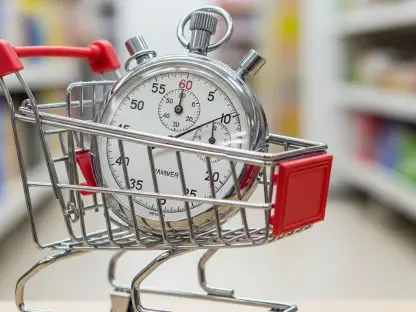In the midst of the Covid-19 pandemic, department stores everywhere are struggling to survive. Since most of them were already losing ground to new digital rivals, they are expected to come out of the crisis on even weaker positions in the market. As sales continue to drop, retailers are forced to lay off hundreds of thousands of employees, while buyers everywhere continue to slash their budgets. Most of them ignore new fashion in favor of strictly necessary products. Bu with the pandemic still spreading, what does the future look like for retailers worldwide? Will dismissals continue to rise? Are brick and mortar stores set to become obsolete?
US Retail Giants Take the First Fall
Once dubbed “giants of the US retail market,” retailers like Sears, JCPenney (JCP), Neiman Marcus, and J. Crew may not survive the pandemic, according to a CNN analysis. But this is not the first crisis they faced. Sears has been on the market since 1893 and has proved strong enough to withstand the Great Depression, the Great Recession, multiple wars, and even the rise of online shopping. Why is it that the novel coronavirus pandemic may prove to be an even greater threat for these businesses and how can they fight it?
Let’s find out below.
New Shopping Habits
The pandemic has changed the way people live and work, but also the way they shop. UK sales dropped 5.1% in March, according to the Office for National Statistics (ONS). With the UK government closing schools, restaurants, and other businesses in an effort to stop the virus from spreading, many department stores were also pushed into closing their doors. According to the ONS, this was the worst contraction since it began gathering data about the UK retail market in 1996. But as the crisis worsened, sales for certain products started to rise. While the sales of clothes and accessories dropped by 34%, food and alcohol sales increased. E-commerce stretched to a peak figure of 22% of all retail sales.
Meanwhile, giants like Adidas, H&M, and Inditex teamed up with unions and labor organizations across the world to minimize the impact of the pandemic on both businesses and employees. The International Labour Organization (ILO) was backed by multiple apparel companies in asking for much-needed emergency funding.
“The Great Recession and other crises have shown that we can prevent the risk of a vicious downward cycle only through large-scale, coordinated and decisive policy measures,” ILO stated.
But with the novel coronavirus still spreading and funding for businesses everywhere being scarce, it’s hard to determine whether these measures will be enough.
Re-Building the Future of Fashion
Fashion events around the world are among the lesser-known victims of the pandemic. Just like major sporting events, parts of the fashion weeks of Paris and Milan have been canceled due to the Covid-19 pandemic. But not all organizers were caught unprepared to tackle the new challenges. Some, like the London Fashion Week, decided to go digital. In what can be seen as a bold decision, the event will combine women’s and men’s wear shows into a big “gender-neutral” online event. It will feature a new digital platform, available for media, traders, and businesses, as well as the general public. With the future of fashion already in the hands of e-commerce, this might prove to be the first step toward rebuilding a sense of “normality” for the public, while also helping designers and companies survive.
However, despite the fact that important fashion events are already taking place entirely online, many voices are still debating if this is the right way to go. There is no way to know if the public will maintain its current interest in fashion once everything goes digital and we know even less about the possible impact on both fast fashion and retail. Right now, designers, department stores, and retailers everywhere are still showing visible signs of distress, despite taking both online and offline measures to fight the crisis.
Conclusion
E-commerce has already proved to be a big game-changer for fashion and retail both in the US and around the world. With the sales of clothes and accessories in the US dropping by more than half in March, serious measures are needed to slow down the impact and ensure business continuity during uncertain times.









